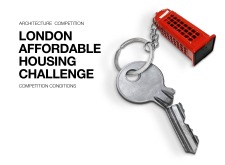5 key facts about this project
## Architectural Design Concepts Analysis
### Overview
The provided images reflect a diverse range of architectural themes and responses to contemporary challenges, including ecological integration, affordability, and the intersection of technology with urban life. Each concept illustrates the potential for architectural practices to engage thoughtfully with their surrounding contexts while addressing functional and societal needs.
### Ecological Integration and Landscape Design
The first image features a network of waterways within a lush landscape, highlighting a commitment to sustainability and ecological preservation. The design emphasizes the creation of a harmonious environment that supports biodiversity and fosters recreational opportunities for the community. Key elements of the design may include native vegetation to enhance local ecosystems and natural materials for pathways that guide visitors through the landscape. This approach illustrates a deliberate strategy to harmonize human activity with the natural world, promoting environmental stewardship.
### Urban Technology and User Experience
The second image presents a towering robotic figure juxtaposed with urban elements, prompting reflections on the relationship between technology and daily life. This design concept raises pertinent questions about the implications of advanced technology in urban spaces, encouraging dialogue on its effects on human experience within such environments. Materials like metal and glass suggest a contemporary aesthetic that complements the innovative narrative, while the striking scale of the robotic figure creates a dynamic focal point. This interaction between mechanical and human elements reveals a complex narrative about coexistence in an evolving urban landscape.
### Affordable Housing Solutions
The third image addresses the urgent need for affordable housing in London, integrating cultural symbols to connect tradition with modern solutions. Emphasizing accessibility and identity, this design concept invites exploration of prefabricated and recycled materials as viable options for creating cost-effective housing. The key symbol serves as a metaphor for unlocking new opportunities, suggesting that innovative architectural solutions can provide essential living spaces without compromising design quality or cultural relevance. This approach highlights the potential for architecture to respond directly to pressing social issues while fostering a sense of community.





















































